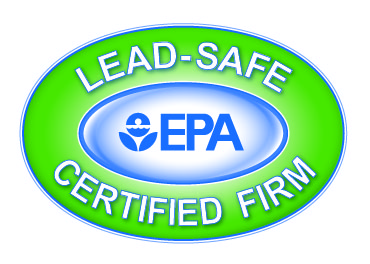moc.detimilnuytefas@nullofni
1-888-309-SAFE (7233)
This Lead Safety for Renovation Repair and Painting (RRP) - Refresher course is intended for renovators, remodelers, painters, and other workers who look to renew their EPA Certified Renovator status. Such status will allow them to do lead-safe renovation, repair, and painting work in pre-1978 housing and child occupied facilities where work will disturb lead-based paint.

To renew certification, you must successfully complete an EPA-accredited Certified Renovator Refresher Course that includes hands-on training before your certification expires. If the Certified Renovator training is not refreshed before your certification expires, you must retake the EPA Lead Renovation, Repair, and Painting (RRP) - Initial course to become certified again. Thus it is important to not let your certification lapse.
A majority of people will be taking this course to renew EPA certification as a Certified Renovator, which will enhance their credentials as private contractors and also satisfy HUD requirements for interim controls training in Federally-assisted target housing.
This course is not an abatement course designed to address the removal, encapsulation, or enclosure of lead-based paint or lead-based paint hazards. To perform lead abatement work requires additional specialized training.
A Certified Renovator is eligible to take this refresher course if the course is completed before his or her previous certification expires. We must collect a copy of each student's prior course completion certificate demonstrating his or her eligibility to take the refresher course.
Your current RRP Certification must be verifiable and refreshed within the past 3 years (5 if taken with hands-on training) in order for us to issue a certificate of completion.
Before you proceed please be aware:
Please view the Course Requirements tab to learn about all course requirements.
Group training is not allowed for this course.
Per the California Department of Public Health, Safety Unlimited, Inc. is authorized to offer 4 Contact Hours (0.4 CEUs) of Continuing Education (CE) for this program.
While these CE units are intended for Registered Environmental Health Specialists (REHS) in California, they are often transferred to other accrediting bodies. Please check with your specific agency for more details and to learn if your agency accepts this course for CE credit (Public Health Accreditation #044).
Safety Unlimited, Inc. is authorized by IACET to offer 4 Contact Hours (0.4 CEUs) of Continuing Education (CE) for this program.
Safety Unlimited, Inc. (Provider #5660170-2) is accredited by the International Association for Continuing Education and Training (IACET). Safety Unlimited, Inc. complies with the ANSI/IACET Standard, which is recognized internationally as a standard of excellence in instructional practices. As a result of this accreditation, Safety Unlimited, Inc. is accredited to issue the IACET CEU. As an IACET Accredited Provider, Safety Unlimited, Inc. offers CEUs for its programs that qualify under the ANSI/IACET Standard.
Following the completion of all training content and achievement of passing scores on all exams, students will need to complete a brief evaluation and confirm his/her identity. After doing so, the student will have access to the course completion certificate.
This fully narrated course is built for success, and includes interactions, exercises, and quiz questions intended to help prepare students for the course exams. Students must answer each quiz question and complete each interaction in order to proceed.
At the end of this online course, you will be required to take a Final Assessment to test your knowledge of the course material. You must achieve a score of 80% or better to pass the Final Assessment.
If you answer less than 80% of the Final Assessment questions correctly, you will be told how many questions were answered correctly, and you will be required to review the material again. After reviewing the course material, you will only be required to re-take questions from sections for which you answered incorrectly. You must retake the exam until you have achieved a combined score of 80%. You will be allowed as many attempts as necessary to achieve a score of 80%.
Since this RRP Refresher course does not include hands-on training, you must also complete a 25 question Final Course Test after completing the Final Assessment. You must achieve a score of 70% or better to pass the Final Course Test.
Once both exams have been passed, you will receive your completed EPA Certified Renovator certificate. Your certification will be valid for 3 years from the date of completion of the course.
This course contains seven modules and should take about four hours to complete. All modules must be completed in order to receive credit for this course.
Traditional renovation work can create significant dust-lead hazards if lead-based paint is disturbed. The lead-contaminated dust generated by traditional renovation work can cause lead poisoning in children. It can also poison pregnant women, you, and other workers, and even pets. Practical changes in work practices can minimize and contain dust. The use of lead-safe work practices makes the job safer and reduces your liability exposure.
This course will teach you how to comply with the EPA Renovation, Repair, and Painting Rule and the HUD Lead Safe Housing Rule, and how to perform lead-safe work practices safely and effectively.
This course is designed to train individuals for the purpose of obtaining certification to conduct renovation, repair, and painting pursuant to Section 402 of the Toxic Substances Control Act (TSCA, 15 U.S. 2682).
The underlying objective of this course is to train renovation, repair, and painting contractors in how to work safely in housing with lead-based paint and comply with the EPA’s Renovation, Repair, and Painting (RRP) Rule, and HUD’s Lead Safe Housing Rule.
Renovators must successfully complete this course as part of obtaining EPA certification.
Upon completion of this course, the student will be able to:
The EPA requires us to collect and submit specific information from each student taking this training. This includes verifying your eligibility to take this training, collecting your date of birth, and submitting a student photo. This photo is independent of any photo you may have uploaded to your student account already, and will be added to your Certificate of Completion and submitted to the EPA.
The EPA has very specific guidelines for the student photo. The image file must adhere to the following compositional and technical specifications and can be produced by taking a new digital image or using a digital scanner to scan a submitted photograph.
The submitted digital image must provide an accurate and recognizable image of the applicant and should conform to the following compositional specifications:

Photographs should be in 24-bit color depth. Photographs may be downloaded from a camera into a file in the computer or they may be scanned into the computer. If you are using a scanner, the settings should be for True Color or 24-bit color mode.
The submitted digital photograph should conform to the following specifications.
Taking a Digital Image with a Digital Camera
When taking a new digital image:
Before a photographic print is scanned, it should meet the following specifications: The image should be in color. The photographic print should also meet the compositional specifications. If the photographic print meets the print color and compositional specifications, scan the print using the following scanner specifications:
Workers must receive additional training, when required by OSHA standards, on the specific hazards of their job. Training Providers should be used to ensure credibility and augment a company’s training program. Therefore, in addition to the training provided by an outside party, students should receive site-specific training supplied by their employer. This training should target the company’s unique approach to hazard prevention, including the use of site-specific equipment, health and safety policies, and emergency procedures. As a rule, this company-specific training should be well documented.
The bottom line in ALL SITUATIONS is that employers are required to ensure that their employees are adequately trained to do their job.
This refresher course does not include hands-on training and results in a certification that lasts 3 years. Taking a refresher training course that includes hands-on training results in a 5 year certification. Since you’re taking the renovator refresher without hands-on training now, for your next refresher course, you must take a refresher course that includes hands-on training to maintain your renovator certification.